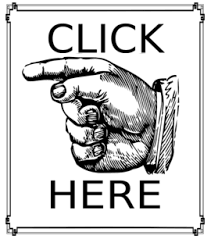In a world where inboxes are flooded with promotions, updates, and spam, getting your email noticed can feel like shouting in a stadium during a rock concert. But here’s the good news: people still check their emails daily—some obsessively. The challenge? Making sure your email doesn’t get ignored, skipped, or trashed.
If you want to write emails that not only get opened but also drive real clicks and action, this guide is for you. Let’s dive into practical, proven strategies—without the fluff.
1. Think Like Your Reader
Before you even write the first line, ask yourself: Why should my audience care about this email?
Every email you send is competing with dozens of others. Get inside their head.
Ask:
What problem are they trying to solve?
What excites or annoys them?
What would make them say “I need to read this”?
If your email doesn’t immediately offer relevance, it’s game over.
2. Craft a Subject Line They Can’t Ignore
It determines whether someone clicks or scrolls past.
What works:
Unexpected curiosity: “This productivity tip is kind illegal (but works)”
Benefit-driven headlines: “How to double your leads without spending more”
Emotion or shock: “We made a $5,000 mistake last week…”
Avoid clichés like “Quick update” or “Check this out.” Your audience has seen it all before.
3. Make Your Preview Text Work Overtime
This is valuable real estate—don’t waste it.
Bad preview text:
“Can’t see this email? View it in browser.”
Better:
“Don’t miss the 3 free tools that could automate your entire workflow.”
Use it to expand on your subject line or tease the content inside.
4. Personalize with Purpose
Personalization is more than “Hi [First Name].” Today’s subscribers expect emails tailored to their behavior, preferences, and past interactions.
Advanced personalization ideas:
Mention products they browsed or left in their cart.
Offer content based on previous downloads or interests.
Celebrate user-specific milestones (anniversaries, birthdays, first purchases).
Example:
“Hey Raj, it’s been 6 months since you joined—here’s something to make it even better.”
When used wisely, personalization makes your emails feel less like broadcasts and more like conversations.
5. Start Strong, Hook Hard
The opening line of your email needs to be compelling. It should immediately validate why someone opened your message.
Examples:
“Let me guess—you’ve tried five productivity tools this month?”
You’ve got a second or two to keep their attention. Make every word count.
6. Focus on One Clear Message
One email. One message. One goal.
Too many emails try to do everything: promote a blog post, announce a webinar, share new products, AND link to social media. That’s overwhelming.
Instead, focus your email around a single CTA (Call to Action) that you guide your reader toward.
Example:
Want them to download an eBook? Make everything about that. No distractions. Keep it laser-focused.
7. Use Visual Hierarchy and Clean Design:
Make your emails easy to read:
Use short paragraphs (1–2 sentences max)
Add subheadings and bullet points
Insert white space between sections
Use images sparingly and only if they support the message
Also, make sure your buttons and links are visible, mobile-friendly, and easy to click.
8. Add Personality and Voice
Nobody wants to read a boring, corporate
Try:
Injecting humor or quirkiness (if it suits your brand)
Using casual language: contractions, emojis (sparingly), and storytelling
Sharing mini anecdotes or personal experiences
Example:
Instead of “We’re excited to announce our new course,” say “After six cups of coffee and 87 Zoom calls, our new course is finally here. 🎉”
Personality builds connection—and connection drives action.
9. Time It Right
Even the best email won’t work if it lands in an inbox at the wrong time.
Tips:
Know your audience’s routine. Are they night owls? Early risers? B2B professionals?
Test different days/times. Tuesday and Thursday mornings are traditionally high performers, but your audience may behave differently.
Automate based on behavior. Trigger emails based on website visits, purchases, or cart abandonment.
10. Track, Tweak, and Test
The best email marketers are data-driven. That means reviewing metrics and experimenting constantly.
Metrics to monitor:
Open Rate: How compelling is your subject line?
Click-Through Rate (CTR): Is your message resonating?
Bounce Rate: Are your emails landing?
Unsubscribes: Is your content missing the mark?
Try A/B testing:
Subject line A vs B
CTA button color or copy
Short vs long emails
Plain text vs design-heavy
11. Always Respect Your Reader
Trust is fragile. Build it by being transparent, helpful, and respectful.
Golden rules:
Never mislead with bait-and-switch subject lines.
Make it easy to unsubscribe.
Don’t spam—stick to a consistent, respectful frequency.
Always deliver value, not just sales pitches.
Conclusion
If you want to stand out in the inbox, your emails need to be thoughtful, strategic, and reader-first. Think of each message as a mini interaction—a chance to build trust, provide value, and move someone closer to taking action.
Remember: writing emails that get opened and clicked isn’t about tricking people—it’s about serving them.
Whether you’re sending a welcome series, a weekly newsletter, or a product promo, the rules are the same: be relevant, be human, and be clear.
